Sudanese youth uphold the global Sustainable Development Goals (SDGs) amid the war in Sudan
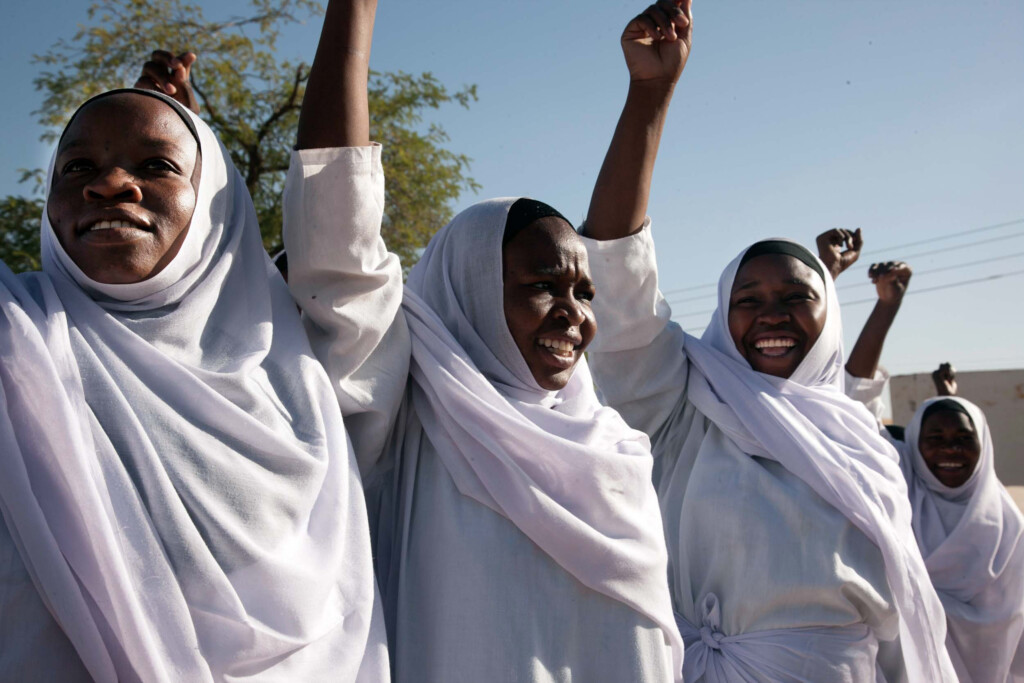
Students in North Darfur (File photo: Hamid Abdulsalam / UNAMID)
In war-torn Sudan, more than 11.3 million people are displaced and over 72 per cent of health facilities in conflict affected areas are no longer functioning, young Sudanese are keeping the spirit of the UN Sustainable Development Goals (SDGs) alive against the odds. As the world marks International Youth Day on 12 August under the theme Local Youth Actions for the SDGs and Beyond, grassroots initiatives again step in where state systems have collapsed. From Nobel-nominated Emergency Response Rooms feeding thousands daily, to dusty classrooms with blackboards run by Education Without Borders where displaced children still take lessons. These youth-led initiatives are not merely preserving SDG goals but redefining them.
The SDGs surviving in Sudan
Where state institutions have collapsed further under the ongoing conflict, youth-led initiatives and grassroots projects continue to bridge the gaps, keeping the SDGs alive in practice.
Starting with SDG3 (Good Health and Well-being) and SDG6 (Clean Water and Sanitation) have become matters of life and death in Sudan, intertwined in practice. In 2025, Sudan’s health system has collapsed, with cholera, dengue fever and measles outbreaks surged in overcrowded displacement sites with scarce water. “Malnutrition is rife, and many of the children are reduced to just skin and bones… Children are dying from hunger, disease, and direct violence. They are being cut off from the very services that could save their lives,” said Sheldon Yett, UNICEF Representative in Sudan.
In Omdurman city, Al Naw University Hospital stands as a rare lifeline in this collapsed system. According to the Le Monde, only 20-30 per cent of Sudan’s hospital facilities remain functional, yet Al Naw continues to operate despite repeated artillery and drone strikes, treating blast victims and improvising morgues in nearby buildings during peak bombardment. Its survival underscores the few remaining threads holding together basic healthcare access. While not a youth-led facility, it partners with younger volunteer medics and community health workers, reflecting this year’s International Youth Day theme by showing how local youth actions are helping sustain essential health services in impossible conditions.
Meanwhile, groups like the Hawadith Street Initiative and youth-led Emergency Response Rooms, nominated by PRIO for the Nobel Peace Prize, deliver medicine, oxygen, and hygiene campaigns where the formal health system has collapsed. These same networks truck clean water into camps and neighbourhoods, preventing outbreaks from spiralling further and safeguarding the bare minimum of public health in the absence of functioning institutions.
The combined efforts of remaining hospitals and grassroots health networks demonstrate that, even in the most fragile conditions, determined local action, often led or supported by young volunteers, can uphold the most basic standards of health and dignity. These youth-driven contributions keep alive the foundations on which Sudan’s recovery must be built, embodying this year’s theme.
SDG4 (Quality Education) remains a frontline priority in Sudan, where UNICEF warned in 2025 that over 19 million children are now out of school due to the war and displacement crisis., prompting alternative learning solutions.
In parallel and in the absence of functioning schools, Education Without Borders, a Sudanese volunteer-led founded in 2011 by students from the University of Khartoum. Now, it rehabilitates abandoned schools, runs classes in open-air spaces, and redistributes textbooks, to keep children engaged despite repeated displacement. These improvised learning spaces offer more than lessons; they protect a generation from permanent educational loss amidst the conflict.
Alongside these grassroots efforts , earlier in 2025, UNICEF has launched 280 solar-powered digital learning centres across 13 states, equipping them with tablets and self-paced lessons in Arabic, English, mathematics, ICT, and science. These centres have reached over 72,000 children, with 51 per cent of them girls, offering vital continuity in education through digital access and community safe-learning hubs.
In June 2025, UNICEF’s Learning Passport and Let Us Learn platforms are providing remote, structured education to more than 76,000 children, 52 per cent of them girls, in core subjects such as Arabic, ICT, and mathematics, ensuring continuity of learning even in areas with minimal connectivity.
Together, these initiatives show that even amid Sudan’s largest-ever education collapse, local educators and youth-focused digital innovation are keeping the promise of SDG4 alive, giving young people the tools, skills, and safe spaces to continue learning, and aligning closely with this year’s International Youth Day theme.
SDG5 (Gender Equality) has become a dire imperative in Sudan’s protracted war. According to UN Women, “the number of people at risk of gender-based violence, including sexual violence, has tripled to over 12 million since the beginning of the war”, a staggering scale of vulnerability. As the conflict deepens, women and girls face “unimaginable risks-from rising gender-based violence to the erosion of essential services,”
The brutality is unrelenting: AP News reports that children in Sudan- as young as one year old have been raped since early 2024, a stark reminder of how sexual violence is wielded as a weapon of war. In the absence of functioning protections, grassroots movements such as the SIHA Network and the No to Women’s Oppression initiative have become lifelines, running women-led kitchens, providing emergency protection, and sustaining advocacy in spaces where formal safeguards have collapsed.
These realities make gender equality in Sudan not just a long-term goal, but an urgent survival strategy. The persistence of women-led and youth-supported networks, feeding communities, protecting survivors, and demanding justice, shows how local action is keeping the fight for safety, dignity, and equal rights alive, even in the darkest moments of war. In doing so, they embody this year’s International Youth Day theme, proving that grassroots leadership can bridge the gap between crisis and recovery.
SDG11(Sustainable Cities and Communities) is about more than building back infrastructure, rather about reclaiming urban life where infrastructure has collapsed. In Sudan, community-led hotspots like Emergency Response Rooms (ERRs) now operate as urban lifelines, providing kitchens, safe hubs, water points, and clinics.
Backing this on-the-ground action, UNEP’s 2024 Post-Conflict Environmental Assessment exposes how conflict and displacement have devastated urban environments, challenges ranging from environmental health risks to sanitation breakdowns.
Alongside, UNEP has teamed up with youth groups through initiatives like the Adapt for Environment and Climate Resilience in Sudan (ADAPT!) programme supporting integrated water management, early warning systems, and rangeland restoration, such as the ongoing Wadi El Ku catchment project in North Darfur. These efforts are vital when formal urban services are shattered, and environmental risks rapidly escalate.
These community and youth-led environmental efforts show that, in line with this year’s International Youth Day theme, local youth actions are helping to rebuild sustainable, resilient communities even amid conflict.
The forgotten SDGs in Sudan’s war zone
SDG2 (Zero Hunger) is one of the most urgent humanitarian challenges in Sudan. Alongside Emergency Response Rooms and diaspora groups, community kitchens, especially those run by ERRs in neighbourhoods like Sururab and South Khartoum’s Belt area, have been providing essential meals daily; in South Khartoum, Takaful kitchens recently resumed service after a lengthy closure amid growing insecurity. Many of these urban kitchens had stopped serving thousands when communication blackouts and funding cuts hit, leaving families without their main food source. Until today, approximately 80 percent of Sudan’s 1,460 community kitchens were forced to shut when USAID paused funding, while in Khartoum State alone, about 221 of 300 kitchens had to suspend operations, threatening the food security of approximately 240,000 families. These mutual aid networks continue working where aid simply cannot reach, offering lifelines in the form of hot meals and solidarity.
Sadagaat, founded in 2002 by a group of Sudanese youth residing in America, has since grown into one of Sudan’s most active volunteer-led charities, delivering emergency relief across health, education, WASH, and food security. Today, it runs a network of more than 45 central community kitchens across 12 cities in Sudan, providing critical daily meals amid widespread hunger and displacement. Branches abroad amplify this impact: Sadagaat-USA, rooted in its youth-led beginnings, channels funding and expertise into large-scale relief projects, while Sadagaat-Canada maintains a dedicated Youth Programme empowering 15-30 year olds to lead community initiatives. Together, these branches directly advance SDG 2 (Zero Hunger) by combating food insecurity and SDG 1 (No Poverty) through community-driven resilience and economic participation.
Together, these grassroots and diaspora-led efforts show how local action, much of its youth-driven, continues to uphold the right to food in Sudan, aligning directly with this year’s International Youth Day theme of “Local Youth Actions for the SDGs and Beyond.”
SDG1 (No Poverty) remains an urgent concern across Sudan, especially as conflict and economic collapse deepen deprivation. In Khartoum’s eastern neighbourhoods, the Arkwet Youth Initiative in El Gedaref city has been providing essential support, distributing food, supplies, and psychosocial aid to over 1,500 displaced households barred from accessing other services
Meanwhile, the World Food Programme warns that malnutrition prevention efforts must scale quickly, calling for 1.4 billion dollars in funding to support over 30 million vulnerable mothers and children with treatment and fortified food programmes in 2025
Collectively, these efforts, one local and immediate, the other global and systemic, demonstrate a comprehensive approach to crisis response in Sudan. While youth-led initiatives at the community level provide essential protection against immediate threats, continued international financial support is critical to avert widespread hunger and promote long-term resilience. These coordinated actions illustrate the strength of grassroots leadership supported by global solidarity and align with this year’s International Youth Day theme, showcasing how local youth engagement can contribute to building a future free from poverty.
SDG8 (Decent Work and Economic Growth). is one of the few ways communities can still rebuild their livelihoods. The Employment and Self-Employment through Strengthening Food and Livelihood Security project, implemented by UNDP Sudan in partnership with Education Above All and QFFD, is actively supporting over 17,700 youth with micro-grants, agricultural inputs, cash-for-work schemes, and infrastructure support aimed at strengthening livelihoods. This initiative brings hope to communities in areas like Gedaref and Kassala.
At the same time, entrepreneurship efforts persist through 249Startups’ Orange Corners Sudan incubator, funded by the Netherlands. This programme continues offering mentorship, business incubation, and access to funding- up to 50,000 euros- for youth-led ventures across sectors including agribusiness, tech, and energy.
Meanwhile, Silatech and UNDP’s October 2024 partnership targets employment in agriculture and livestock production through the same livelihoods project-offering support such as tools, training, and micro-grants for youth and internally displaced persons.
Together, these youth-focused livelihood programmes show how skills, innovation, and enterprise are not only creating pathways out of poverty but also directly advancing this year’s International Youth Day theme by empowering young people to drive sustainable recovery in Sudan’s most fragile communities.
SDG 16 (Peace, Justice, and Strong Institutions)is under immense strain currently in Sudan. Despite the legal protection being scarce, Sudanese youth-led groups and movements continue to fill the gap where institutions have collapsed. An example is The Emergency Lawyers who continue offering urgent legal aid and carefully documenting human rights violations across Sudan, drawing attention to targeted raids, disappearances, and attacks on lawyers across the country. In February 2025, they reported that RSF paramilitaries killed civilians in villages in the White Nile state, a “massacre” describing the attacks as involving “field executions, abductions, forced disappearances, and lootings”, with a few victims shot while attempting to flee across the Nile.
At the same time, the Sudan Human Rights Hub coordinates more than 40 grassroots rights organisations in Sudan. the hub is collectively documenting violations, producing investigative reports, and advocacy resources to safeguard evidence and press for accountability. Despite the absence of a functional judicial system, the hub acts as a central node for human rights advocacy.
Parallel to these efforts, Girifna, the youth-led non-violent resistance movement founded in 2009, continues its civic education campaigns and peaceful organising despite the ongoing conflict. According to the U.S. Institute of Peace, Girifna works to educate Sudanese youth and the wider public about their rights and the methods of nonviolent resistance- efforts that have persisted through years of repression. In cities such as Khartoum, Nyala, and Omdurman, members engage in public forums, awareness drives, and grassroots mobilisation to promote rights, democracy, and citizen participation, even as civic space shrinks under war.
These youth-led justice networks and advocacy movements show that, even without functioning institutions, young Sudanese are defending rights, documenting abuses, and shaping the foundations of future accountability, a clear reflection of this year’s International Youth Day theme.
SDG9 (Industry, Innovation and Infrastructure),Sudan Youth Organization on Climate Change SYOCC remains an active youth-led NGO focused on renewable energy awareness, low-carbon development, climate education, and rural development. The group uses youth forums, peer exchanges, and grassroots projects to promote sustainable livelihoods and environmental resilience across communities. This is clearly highlighted in SYOCC’s profile on Tadamon, a verified platform documenting Sudanese civil society actors.
The organisation’s impact is further underscored by the pioneering role of its founder, climate activist Nisreen Elsaim, who has chaired SYOCC and continues to amplify climate justice and youth innovation on multiple international platforms.
Together, SYOCC’s grassroots programming and Elsaim’s international advocacy demonstrate how youth are spearheading innovation, environmental sustainability, and infrastructure adaptation, especially in a region as vulnerable as Darfur.
This work directly reflects this year’s International Youth Day theme by showing how local youth-led innovation is advancing sustainable infrastructure and climate resilience in Sudan.
Obstacles to SDG implementation in Sudan
Sudan officially commits to all 17 Sustainable Development Goals (SDGs), through frameworks like the UN’s development programme in Sudan and the Sudan Policy Advisory Group (SPAG), yet several goals: remain stalled at the public level, with almost no tangible implementation anywhere in Sudan.
This lack of tangible progress on many Sustainable Development Goals is not solely due to the absence of youth-led initiatives. The country has faced prolonged economic collapse and the systematic dismantling of state institutions, followed by the outbreak of war. These factors have resulted in severe operational incapacity and a critical lack of investment, further impeding the execution of SDG frameworks at any meaningful level.
SDG7 (Affordable and Clean Energy) illustrates the gap clearly. According to the Electricity Access Linkages to Sustainable Development Goals in Rural Sudan article, just 63.2 per cent of the population had access to electricity in 2022, with a pronounced rural to urban divide, as urban access stood at 84 per cent while rural access was only 49 per cent. This disproportion illustrates how infrastructure deficits limit the country’s ability to advance SDG 7 in practice, especially in a conflict environment where energy investments are minimal and community-scale renewable projects are rare.
Sudan’s vulnerability to climate change makes SDG13 (Climate Action) critical. The UNEP Sudan climate adaptation profile notes that the country faces intensifying droughts, erratic rainfall, and rising temperatures. Despite international recognition of these risks, there is a notable absence of active, youth-driven adaptation programmes in 2024-2025. Climate action remains largely at the level of policy rhetoric rather than implementation.
Although SDG12 (Responsible Consumption and Production) is formally embedded in Sudan’s SDG strategy and structured around frameworks such as sustainable consumption policies, waste reduction, and resource efficiency, there is little evidence of this translating into tangible programmes or institutional actions. In comparison, SDG10 (Reduced Inequalities), SDG14 (Life Below Water), SDG15 (Life on Land), and SDG17 (Partnerships for the Goals) remain similarly aspirational in Sudan’s policy documents, with no documented implementation efforts visible at the national or local level in 2024 or 2025. This persistent mismatch between policy and execution highlights the challenge Sudan faces in transforming SDG commitments into real-world progress.
The role of Sudanese youth in Sudan’s SDG future
While Sudan’s policy frameworks recognise the full spectrum of the Sustainable Development Goals (SDGs), their lived impact depends on moving beyond high-level commitments to concrete, locally driven action. Years of conflict have left deep gaps in funding continuity, institutional capacity, and basic infrastructure, while civic space for youth organising remains narrow and, at times, unsafe. Many SDG areas are further undermined by scarce data and fragmented coordination, making progress difficult to measure, and by the absence of stable, long-term investment to replace short donor-driven projects.
In this environment, empowering young Sudanese to lead, innovate, and collaborate is not optional but essential. Creating safe and enabling environments for youth-led initiatives, paired with sustained resources and national ownership, is key to shifting the SDGs from paper to practice. This year’s International Youth Day theme, “Local Youth Actions for the SDGs and Beyond,” is a reminder that Sudan’s sustainable future will be shaped not only by restoring services or infrastructure, but by positioning its youth as the driving force for resilience, equity, and lasting change.
#WorldYouthDay2025

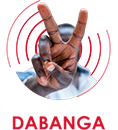
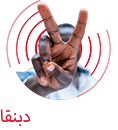



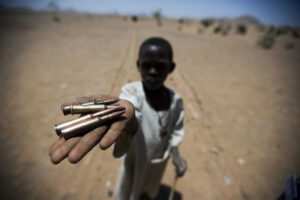
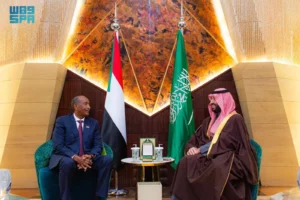


 and then
and then